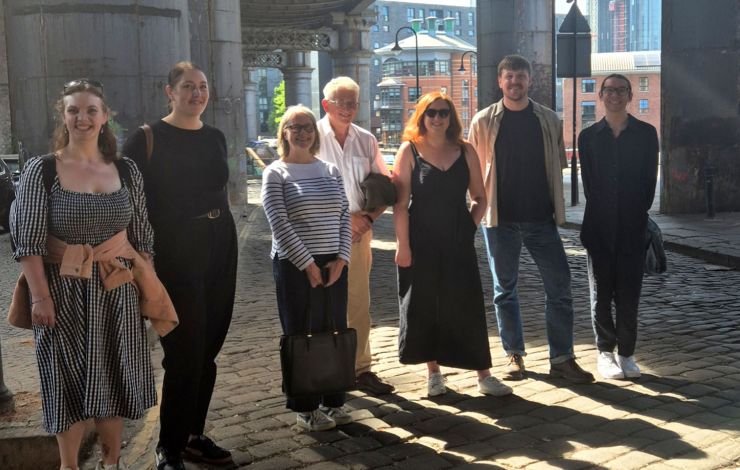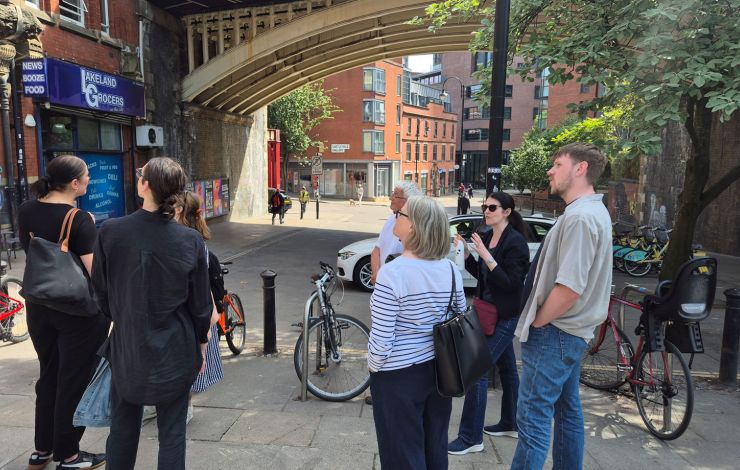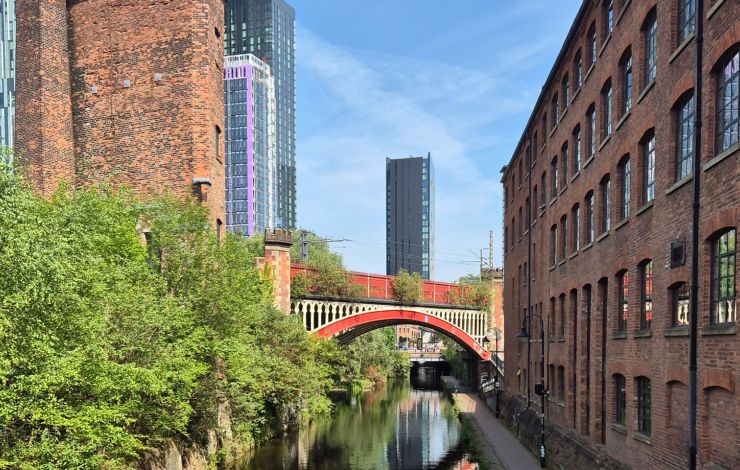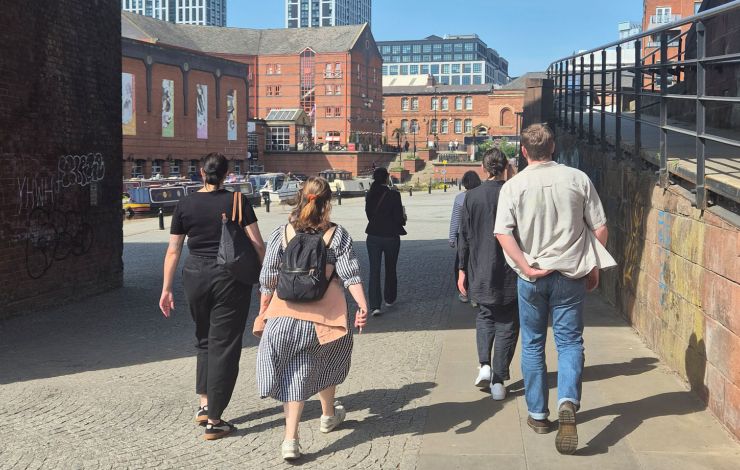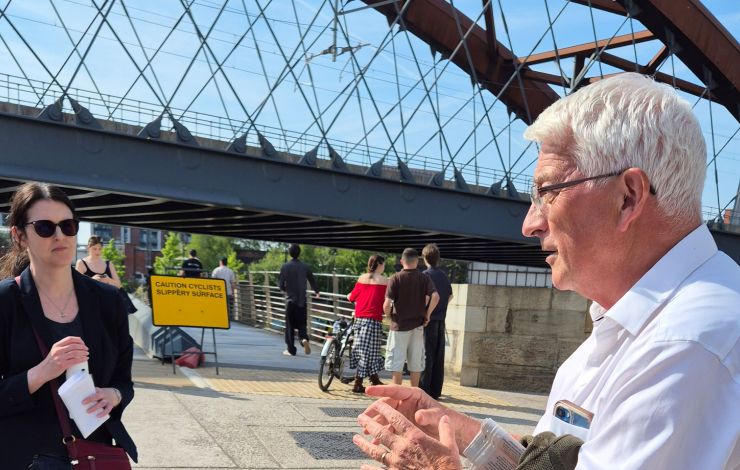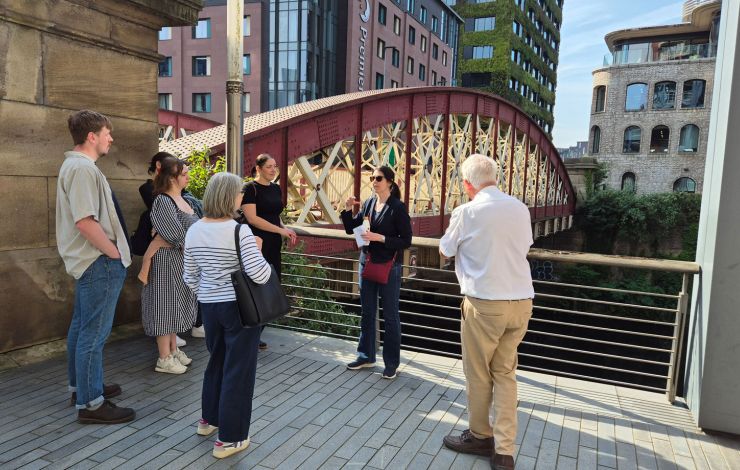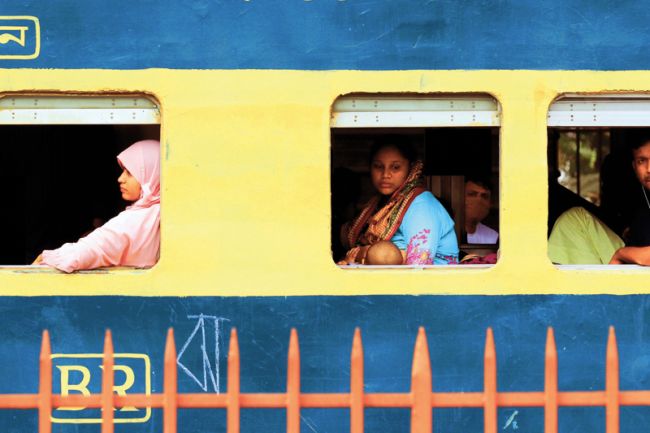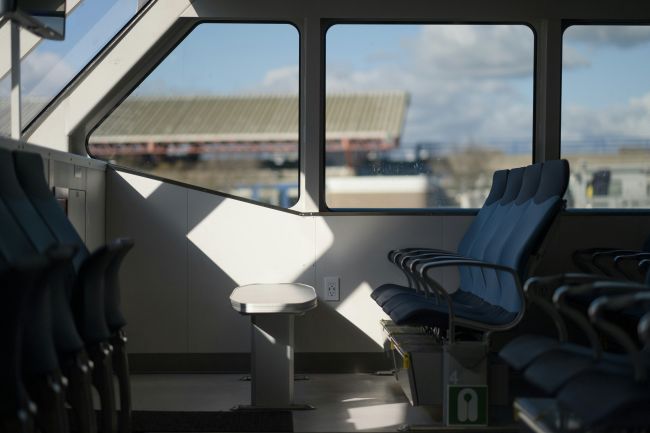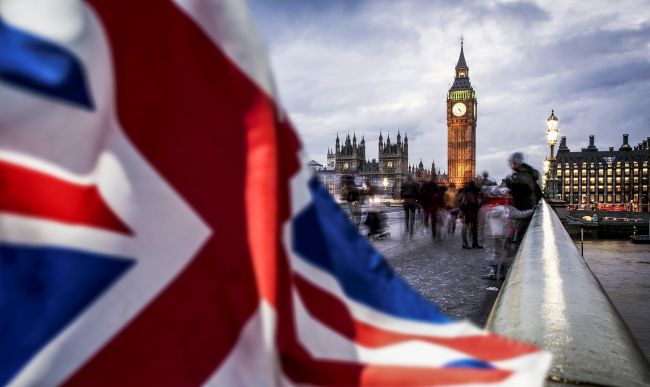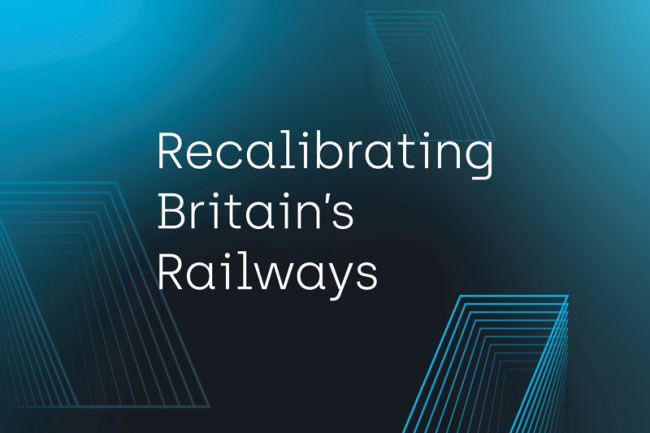Beyond the Rails in Manchester: Exploring Manchester’s railway roots and industrial legacy
Explore Manchester’s rail legacy with Steer’s Beyond the Rails tour — a journey through history, protest and change.
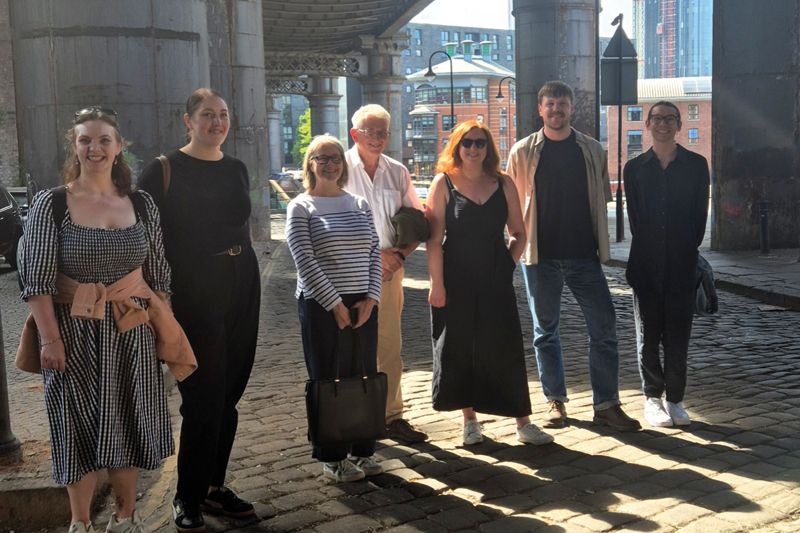
As part of Steer’s Beyond the Rails campaign, we recently joined Green Badge tour guide Philippa Vishnyakov for a two-hour walking tour through Manchester to uncover the stories that helped shape the world’s relationship with trains.
Our journey began at Liverpool Road Station, the world’s first passenger railway station, opened in 1830 as part of the Liverpool and Manchester Railway. While now part of the Science and Industry Museum, its original platforms remain a powerful symbol of how railways revolutionised travel, commerce, and society. But the path to progress was not without resistance. Early opposition came from canal companies fearful of losing trade, and wealthy landowners reluctant to see their estates divided by iron rails. Some demanded eye-watering compensation, while others lobbied Parliament to block the route entirely.
As trains began to gain speed — some reaching up to 30mph — public concern grew. Newspapers questioned whether the human body could cope with such velocity. Would passengers be able to eat or breathe while hurtling through the landscape? Doctors warned of possible brain damage. Yet the trains kept coming, reshaping cities, economies and expectations.
By the early 20th century, railways had become more than just transport. They were political stages. The suffragette movement used trains not only to travel but also to protest. Activists boarded trains to attend rallies and even used the rail network to distribute pamphlets or evade arrest. The railways offered a new kind of mobility — and, with it, new tools for civil disobedience.
Further along our route, we pass under the impressive Castlefield Viaduct, a feat of Victorian engineering that has recently been reborn as an urban park. This dramatic structure has also found fame on screen, notably in the final season of Peaky Blinders, where one of the show’s pivotal scenes plays out against the backdrop of Manchester’s brooding skyline. The viaduct’s gothic arches and industrial heritage have made it a natural set for TV and film, blending the historical with the cinematic.
This rail tour offers more than just a journey from station to station — it’s a voyage through history, invention, protest, and pop culture. Manchester's railway legacy isn’t just about tracks and timetables; it’s a story of human ambition, resistance, imagination, and change.
Want to know more about Beyond the Rails?
Explore upcoming events, panel discussions, and local activities from the Beyond the Rails campaign, marking 200 years since the Stockton & Darlington Railway and shaping the future of rail. View all events and activities.
